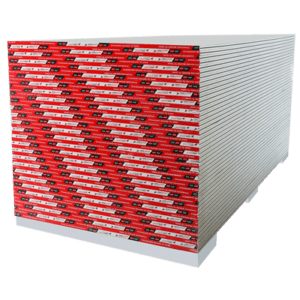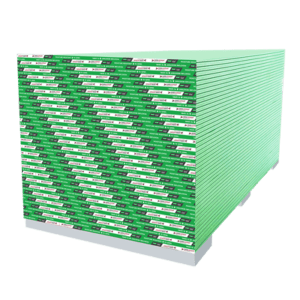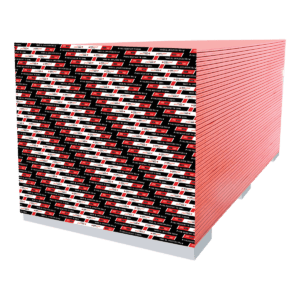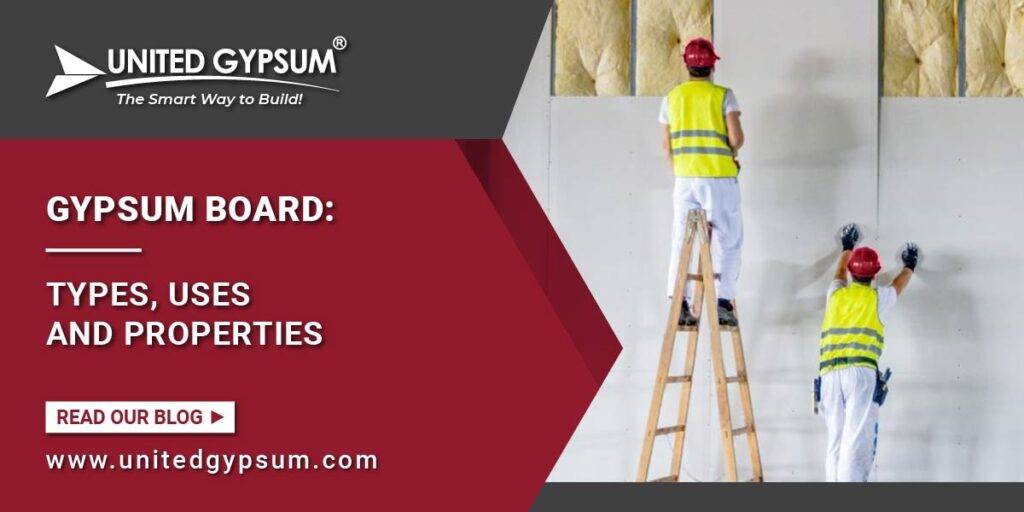Gypsum Board, alternatively known as Drywall or Plasterboard, is one of the vastly used materials in the construction field. Its superior strength and durability have led to its resourceful utilization in constructing ceilings, interior walls, and partition walls. A Gypsum Board owes its broad spectrum of applications to its supreme qualities but before delving into the description of individual properties, let’s first learn about its synthetic framework.
The synthetic framework of gypsum board
The chemical name of gypsum is hydrated calcium sulfate. In its naturally occurring raw form, it is utilized in multiple aspects of construction and manufacture, including the drywall.
A Gypsum Board usually consists of an incombustible core of gypsum rock which is sandwiched between a pair of tough paper layers. At United Gypsum, such a framework constitutes the Smart Gypsum Board. However, there are also other variations in this range including the fire-resistant, moisture-resistant, and foil-backed variants.
As the word ‘Drywall’ indicates, a firmly bonded core of gypsum with surrounding paper layers eliminates the further use of plaster in the construction of ceilings and walls. On its own, a gypsum board forms a stable surface which can be furnished by paper or paint.
Properties of a gypsum board
Gypsum board possesses a multitude of properties which has led to its enormous use in construction areas. Some of its supreme properties are described below.
- Fire-Resistance
The gypsum mineral has been naturally bestowed by fire-resistance; all thanks to the presence of water in its chemical composition. Almost 21 percent of gypsum is constituted by water bonded with calcium sulfate crystals that form 78 percent of the composition.
Due to this molecular structure, water converts into steam at a steady rate whenever this mineral comes in contact with fire. This property serves as an effective barrier against fire transmission and the heat damage would wreak havoc on a much lesser area. Due to this inherent fire resistance, gypsum products are widely used to construct commercial, industrial, and residential buildings.
- Heat Insulation
Being a hydrated calcium sulfate, gypsum crystals undergo the process of calcination under temperatures exceeding 80 degrees, resulting in loss of water in the form of steam. This prevents heat from penetrating the inner cores thus providing effective heat insulation.
Nonetheless, it is important to remember that if the temperature keeps increasing more than the upper limit for around 30 minutes, such as in cases of fire, the standard drywall usually starts to crumble as it loses all of its water of crystallization. For this purpose, there have been advances in the form of fire-resistant or fire-rated gypsum boards which are utilized in areas which are at higher risk of fire emission.
- Acoustic Performance
The ability of gypsum boards to absorb sounds and prevent their regeneration is a very significant property utilized for soundproofing purposes, especially in the interior walls of hotels, music rooms, hospitals, and theatres.
Although masonry walls are widely used for this purpose due to their denser composition, gypsum boards and panels with premium acoustic property can achieve the purpose of sound control in relatively less mass. Hence, the construction of houses, schools, and hospitals in high traffic usually avail the most out of this property.
- Vapor Barrier
Last but not the least, gypsum possesses unique thermal properties due to which gypsum boards can be used in the interior walls as a potent vapor barrier to reduce indoor humidity. Therefore, plasterboards are vastly employed to achieve a striking balance between indoor humidity and temperatures.
Uses of Gypsum in the Construction Field
As gypsum is a naturally occurring mineral, its unlimited availability has resulted in the production of various types of gypsum products. Moreover, the utilization of this mineral has taken over a wider aspect of the construction department due to its aforementioned properties. Some of its uses in this development include:
- The use of gypsum allows the achievement of a modern ambiance and an aesthetic appeal.
- The installation of gypsum boards is usually an uncomplicated, rapid, and hassle-free process if you’ve chosen a professional and reliable construction worker.
- As mentioned before, the use of gypsum boards doesn’t require additional plaster afterward. They provide a seamless finish that can be furnished by paint and wallpapers without requiring a final coat.
- Due to its unparalleled properties and attractive profile, it is widely used in the construction of ceilings, walls, and partition chambers.
Types of Gypsum Boards
Mentioned below are the various types of gypsum boards that are used for construction purposes at the United Gypsum:

1. STANDARD DRYWALL/GYPSUM BOARD
- The most commonly used standard gypsum board with a resilient and incombustible gypsum core within specifically designed paper layers.
- Usually designed in coherence with ATSM standards.
- Areas of application include interior walls, partition chambers, and ceilings where extra resistance from fire, moisture, or other aspects is not the primary concern.

2. MOISTURE-RESISTANT GYPSUM BOARD
- A modified gypsum board consisting of a gypsum core along with additions of wax and silicone compound encased within the tough green paper.
- Improved resistance to moisture due to water-resistant additives.
- Areas of application include walls and ceilings in areas with high humidity or exposure to water such as bathrooms, kitchens, shower areas, and as external soffits.

3. FIRE-RESISTANT GYPSUM BOARD
- A premium drywall comprising of non-combustible fibers incorporated within the gypsum core and enclosed within pink-colored tough cohesive paper sheets.
- Such composition serves as a modification to the inherent fire resistance quality of gypsum.
- Areas of application include the walls and ceilings of areas with major risks of catching fires and increased temperatures such as fire escape stairs, elevators, computer rooms, and laboratories.
4. FOIL-BACKED GYPSUM BOARDS
- A premium gypsum board with the back liner attached with a sheet of aluminum foil to reflect around 95 percent of thermal radiation.
- Maintains an optimal indoor temperature by acting as a vapor retarder and preventing moisture penetration.
- Areas of application include inner surfaces of exterior walls in colder climates to achieve insulation.
In a nutshell, Gypsum Board is widely utilized in the construction department due to its excellent properties including heat-resistance, moisture-resistance, and thermal properties. However, it comes in various categories and modifications for the prime objective of achieving adequate adaptability and functioning. At United Gypsum, we ensure that our clients earn the utmost benefit from all the above-mentioned uses and characteristics in a cost-effective manner. For all your construction-related challenges, visit our website and let us assist you with our advanced products.

